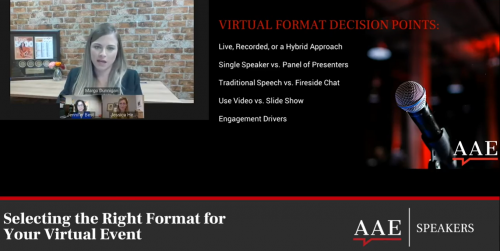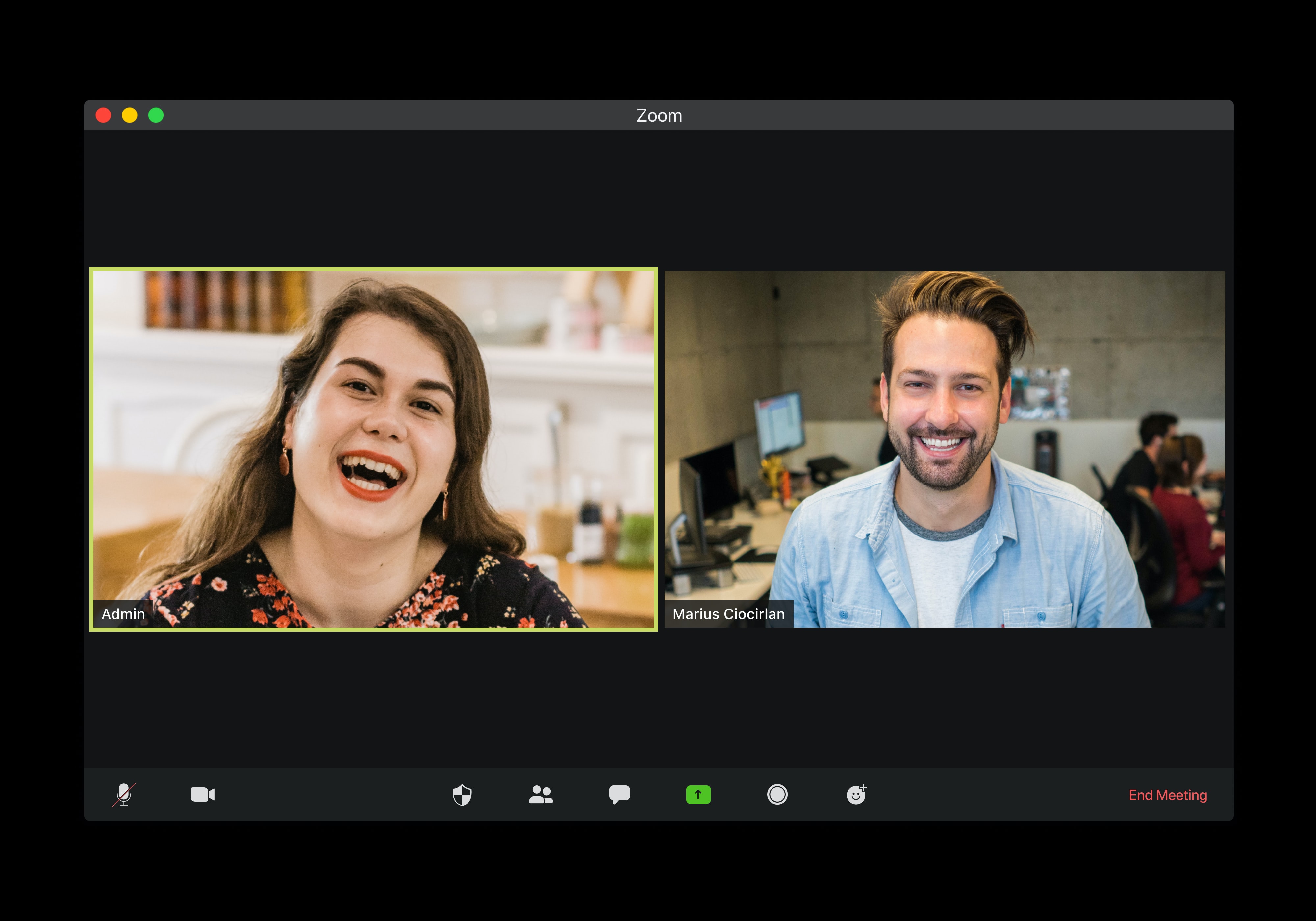Over the past few months, we have seen a global shift to virtual work, school, entertainment, and social meetings. The speaking industry was certainly no exception, and AAE has prided itself on becoming a leader in the virtual events space. In a recent survey of 96 virtual events, over 95% of our clients said that their virtual event met or exceeded their expectations, and 92% reported that they are likely to plan another virtual event.
We don’t expect virtual events to go anywhere any time soon, especially as we continue to adapt to ever-evolving COVID restrictions and expanding digital event options. There are different types of virtual event formats that event planners can host depending on their event goals.
Live Stream
Live, or live-stream, events allow attendees to listen to and interact with speakers in real-time. One of the biggest benefits of a live-stream is creating a “have to be there” impression, similarly to traditional in-person events where attendees don’t have the option to tune in after the fact. This can boost engagement and attendee numbers and is a great option for creating more buzz and interactivity around your event. Keep in mind, though, that live streams have an increased risk for technical difficulties, and that it might exclude attendees who live in different time zones.
Recorded
For recorded events, the major components of the event are pre-recorded and made available to attendees at a certain time or on-demand. Pre-recorded sections allow for a more polished event and can be made available on-demand for maximum outreach, but don’t create the same urgency of live-stream events.
Live and Pre-Recorded
These events attempt to combine the best of both recorded and live options. Pre-recorded sections can be aired live after which the speaker tunes in for a live Q&A. This format is not to be confused with hybrid events, which combines virtual elements with a live in-person event experience. Check out Hybrid Events: The Emerging Trend for 2021 for a more detailed breakdown of hybrid events.
Each format comes with unique benefits and drawbacks, so how do you know which approach is the best for your event? Our COO, Margo Dunnigan, explained how to select the right format for your virtual event during Event Marketer’s “Virtual Event on Virtual Events.” Here are our key takeaways.

Virtual Event Format Decision Factors
Factors to consider when choosing an event format often include your event size, budget, timeline, and audience demographic. There are, however, also a few unique factors to consider for virtual events.
Single Speaker vs. Panel of Presenters
Choosing whether to host a single guest speaker or a larger panel depends on the goal of the event and the audience. For virtual events, having multiple speakers is an important factor to consider when choosing a format to ensure smooth transitions and to minimize technical difficulties.
Traditional Speech vs. Fireside Chat
A traditional speech may be a keynote delivered by a single speaker, often with multimedia slides or videos to supplement their presentation. A fireside chat is more informal and includes a moderated conversation between single or multiple guests. Moderators or virtual emcees can be hired or can come from within the organization hosting the event, which makes fireside chats a great option for keeping your organization’s content and theme on track throughout the event.
Multimedia Supporting Technology
Videos, slide shows, or other multimedia presentations are often great supplements to virtual events. Make sure that the virtual platform you choose has the technology to support it.
Engagement Drivers
One of the largest drawbacks of any virtual event is the gap between in-person and virtual engagement. When choosing a virtual platform and format, consider the available options to boost attendee engagement and make the event more interactive.
Engagement drivers include polls and social voting, where the most upvoted questions from the audiences can be answered in a Q&A; breakout sessions, where attendees can be split into groups to discuss the event content; and surprise guests, such as celebrities or top-name CEOs, that keep an audience engaged throughout the event.
Choosing between live, recorded, or a combination of the two may require some extra care and consideration, but is ultimately an important factor to the success of any virtual event. Whether you’re new to virtual events or an experienced event planner, AAE is here to help you achieve success. Contact us to book a great virtual speaker for your next event.





